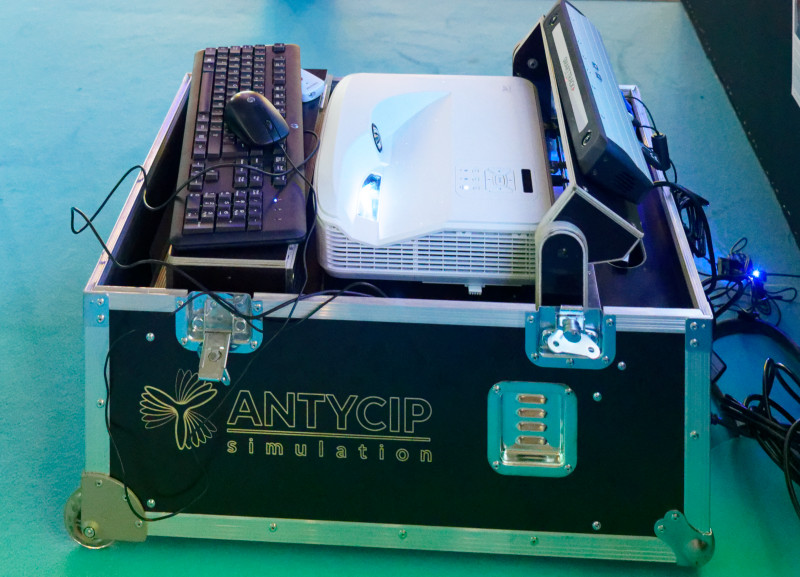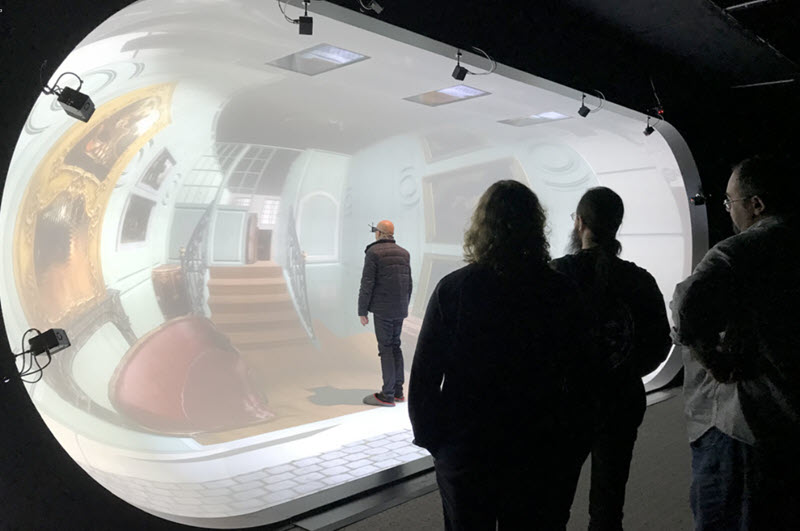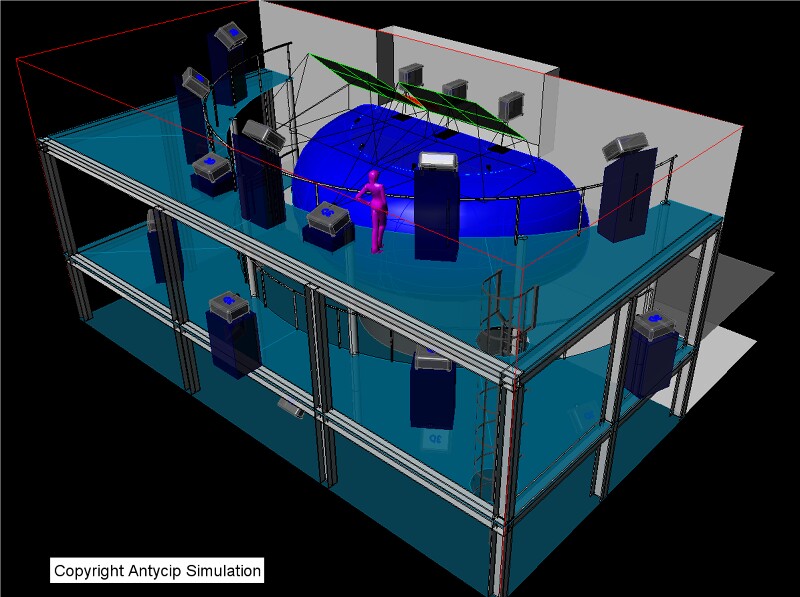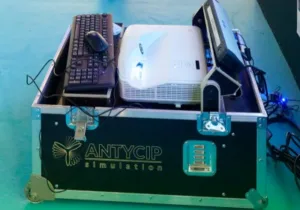Christie was at the show, but as in previous years, it was mainly supporting partners and the main recepient of this support was Antycip, a simulation specialist that was using UST Christie projectors with active glasses for 3D simulations.
Many of the projectors that we saw in Laval were UST, which is ideal in that application as users, who typically want to get close to the screen, can do so without causing shadows on the screen. Another general point about projectors at the show was that viewers need to decide if they really want UltraHD and 3D. If so, they have to purchase three chip DLP units that support native UltraHD. Single Chip UltraHD DLP projectors use 2560 x 1600 chips that are exposed twice, with a slight offset, to create UltraHD images. However, if you want to run active 3D, this has to be done at 120Hz, and that stops the offset working, so the chip’s native resolution is the maximum.
Antycip has worked with Christie to develop a complete 3D system in a rolling box. The unit includes the PC, the projector (Captiva DHD400S with 3,500 Ansi Lumens of output), the tracker in a single flight case. The aim is to make it very quick and simple to set up a 3D display system. The system costs around €25,000 depending on the precise PC specification.
 Antycip has a turnkey simulation system based on a Christie projector. Image:Meko
Antycip has a turnkey simulation system based on a Christie projector. Image:Meko
Antycip told us that it also works with Barco and has collaborated on a number of large simulation projects. A recent highlight has been the Tore ( The Open Reality Experience) at the University of Lille. The project was under development from 2013 and uses a unique spherical rigid acrylic shape and twenty Christie TreiDLP projectors in a rear projection mode. To make the image as seamless as possible, the screen was made from 10 ‘petals’ glued together with liquid acrylic. The joins were then sanded smooth to create a seamless half sphere CAVE. Antycip kindly sent us these images of the installation.
 The Tore installation has a curved and seamless look. Image:Antycip
The Tore installation has a curved and seamless look. Image:Antycip
 In the TORE design there are more than 20 Christie projectors. Image:Antycip
In the TORE design there are more than 20 Christie projectors. Image:Antycip
We expect to catch up again with Antycip in a couple of months at the ITSEC show in Stuttgart.

